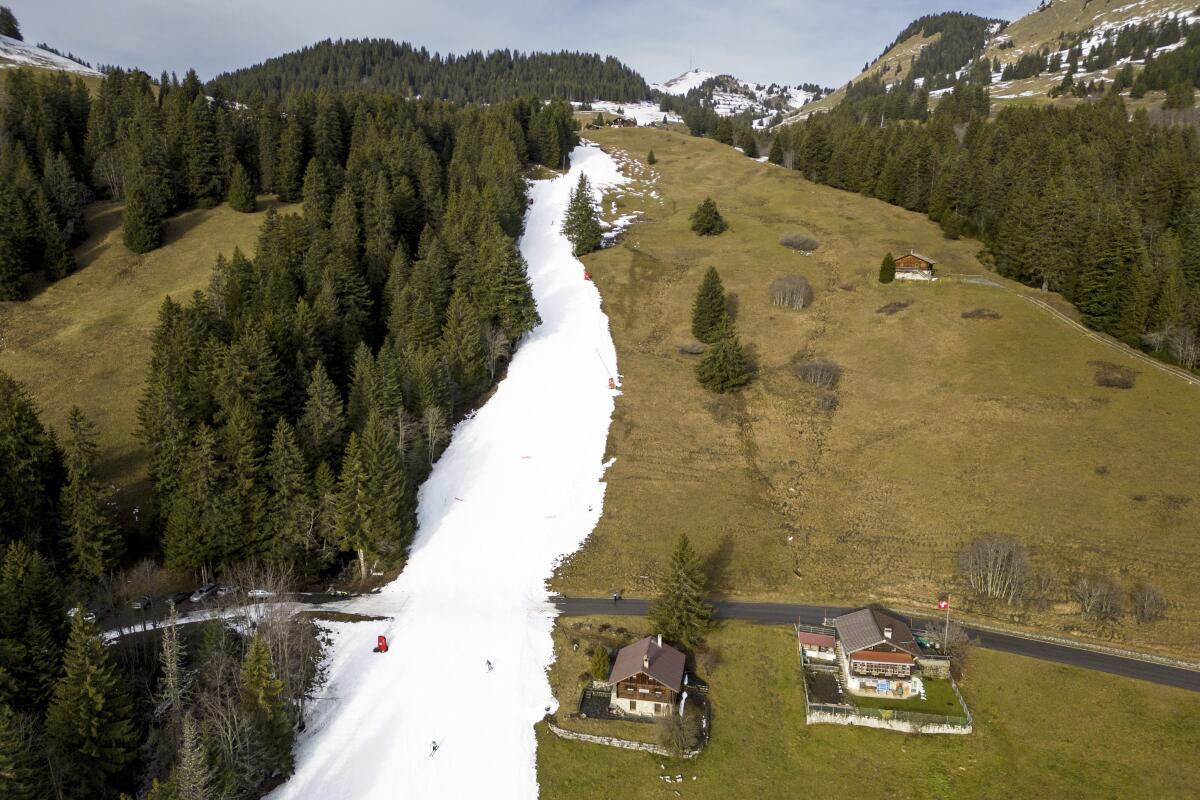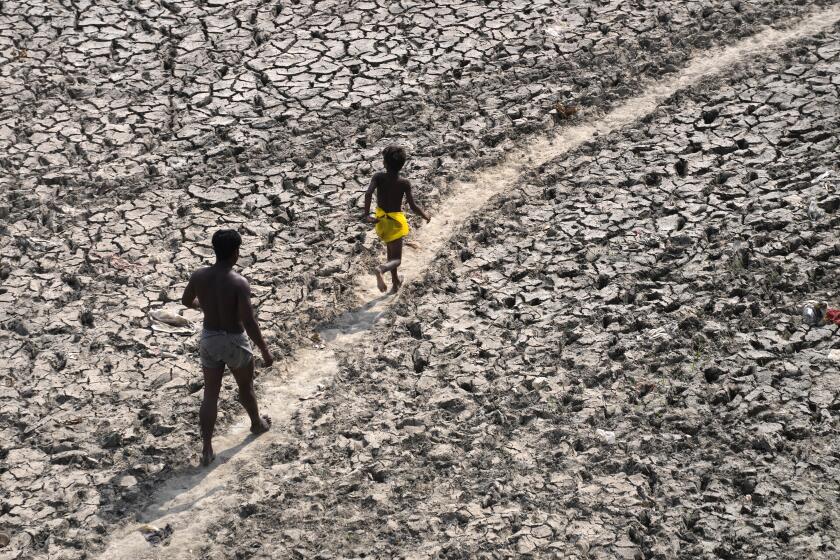Grassy slopes in the Alps? European slopes facing snow shortage in record warm winter

Much of the Alps just don’t look right for this time of year. Sparse snowfall and unseasonably warm winter weather in much of Europe is allowing grass to blanket mountaintops across the region where snow might normally be, causing headaches for ski slope operators and aficionados of Alpine white.
Patches of grass, rock and dirt were visible Monday in some of Europe’s skiing meccas — such as Innsbruck in Austria, Villars-sur-Ollon and Crans-Montana in Switzerland, and Germany’s Lenggries and far beyond. The dearth of snow has revived concerns about temperature upheaval linked to climate change.
On a swath stretching from France to Poland, but with the Alps at the center, many parts of Europe were enjoying short-sleeve weather. A weather map showed Poland racking up daily highs of more than 50 degrees in recent days.
It’s a sharp contrast to the frigid weather and blizzards in parts of the United States lately — and to ski slopes in California, with Lake Tahoe and Mammoth Mountain reporting as much as 42 inches of new snow in a weekend storm.
Swiss state forecaster MeteoSwiss pointed to some of the hottest temperatures ever this time of year. A weather station in Delemont, in the Jura range on the French border, hit a record average daily temperature of nearly 65 degrees on the first day of the year, well over 30 degrees more than the previous record high for January. Other cities and towns followed suit with records.
MeteoSwiss quipped on its blog: “... this turn of the new year could almost make you forget that it’s the height of winter.”
The world is creeping closer to the warming threshold international agreements are trying to prevent.
The start to 2023 picked up where many countries had left off: Last year was the hottest on record in both Switzerland and France. More broadly, the United Nations’ World Meteorological Organization says the last eight years are on track to be the eight warmest on record. Its final tally on global temperature figures for 2022 will be released in mid-January.
In France, national weather agency Météo France said 2022 ended with some of the warmest weather the country has ever experienced at this time of year — capping an exceptionally warm year that saw temperature records broken and rampant forest fires and drought conditions.
Météo France said the southern Alps — as well as northern Alps slopes above about 7,200 feet — have seen close to normal snowfalls. But snow is notably lacking at lower altitudes in the northern Alps and across the Pyrenees, it said.
To be sure, the Alps cover a lot of territory and not all of it is bereft of snow: Perhaps counterintuitively, some of the best snowfall has been reported in the Italian Dolomites to the south of the Swiss Alps.
Germany too has seen unusually springlike temperatures, with temperatures as high as 61 degrees in parts of the country Monday. New Year’s Eve is believed to have been the warmest Dec. 31 since reliable records began. The German Weather Service reported readings of 68 degrees and just above at four weather stations in southern Germany, Deutsche Presse-Agentur reported.
Wim Thiery, a professor of climate science at the University of Brussels, said the same jet stream that pulled down cold air from the Arctic into the U.S. has fanned warm air from subtropical zones into Europe. He warned that climate change hasn’t finished its work — unless people cut use of fuels that trap heat in the atmosphere.
”By the end of the century [it’s] just going to be over ... skiing in the Alps as we know it,” he said, adding that lower-altitude mountain areas already feel the effect. “In the future, these problems will get worse, because the snow will continue to melt as long as the climate warms.”
More to Read
Start your day right
Sign up for Essential California for news, features and recommendations from the L.A. Times and beyond in your inbox six days a week.
You may occasionally receive promotional content from the Los Angeles Times.







